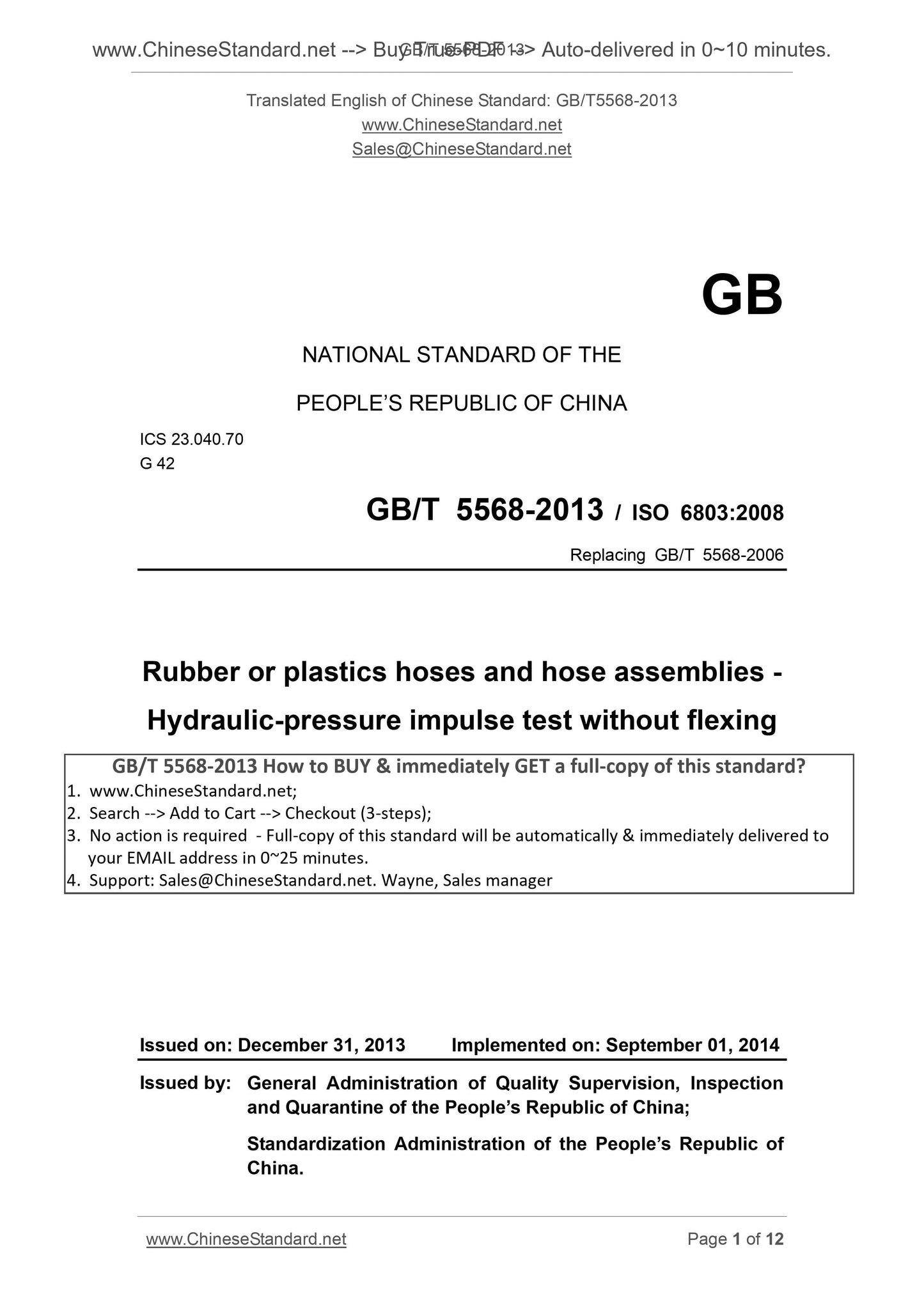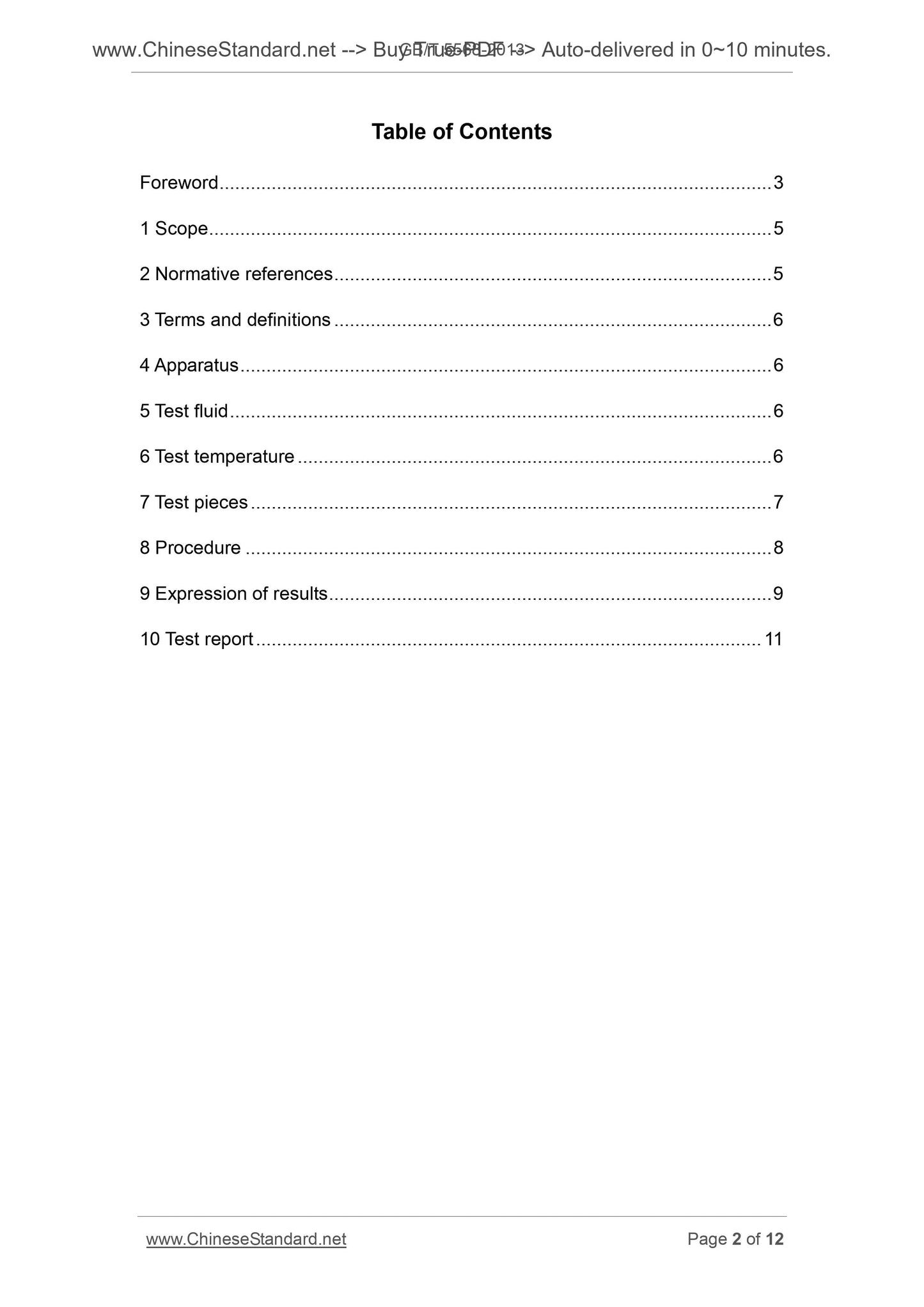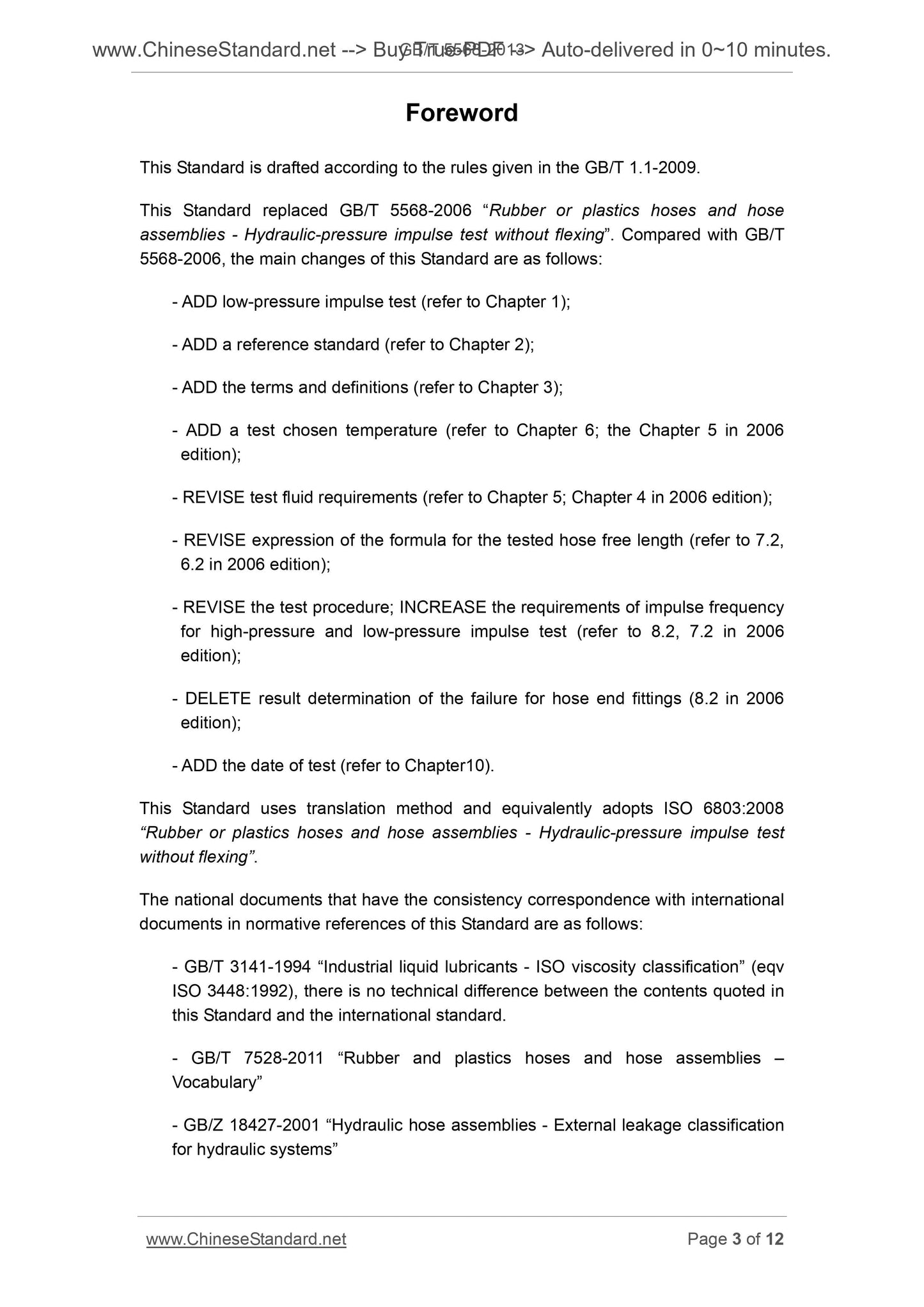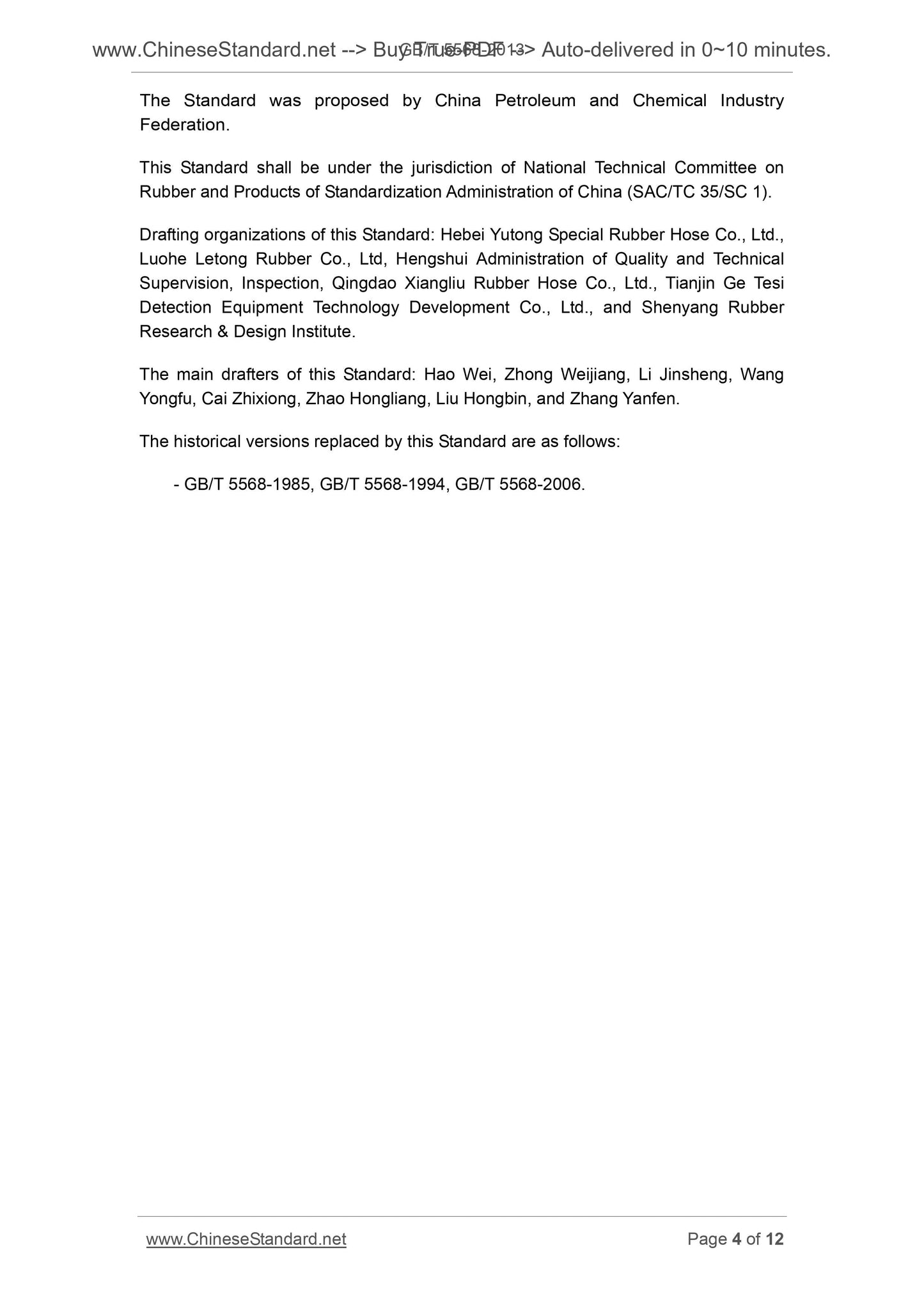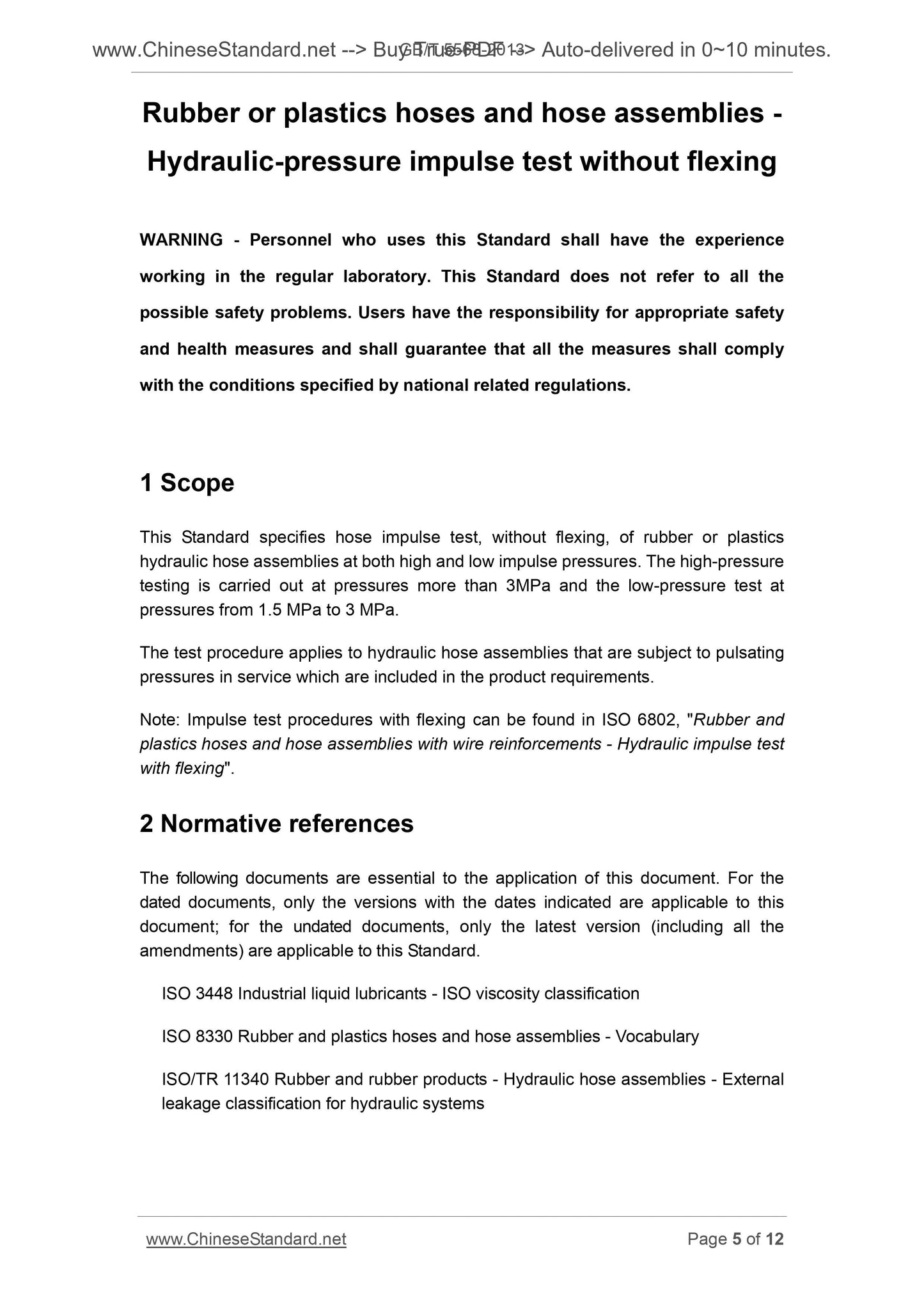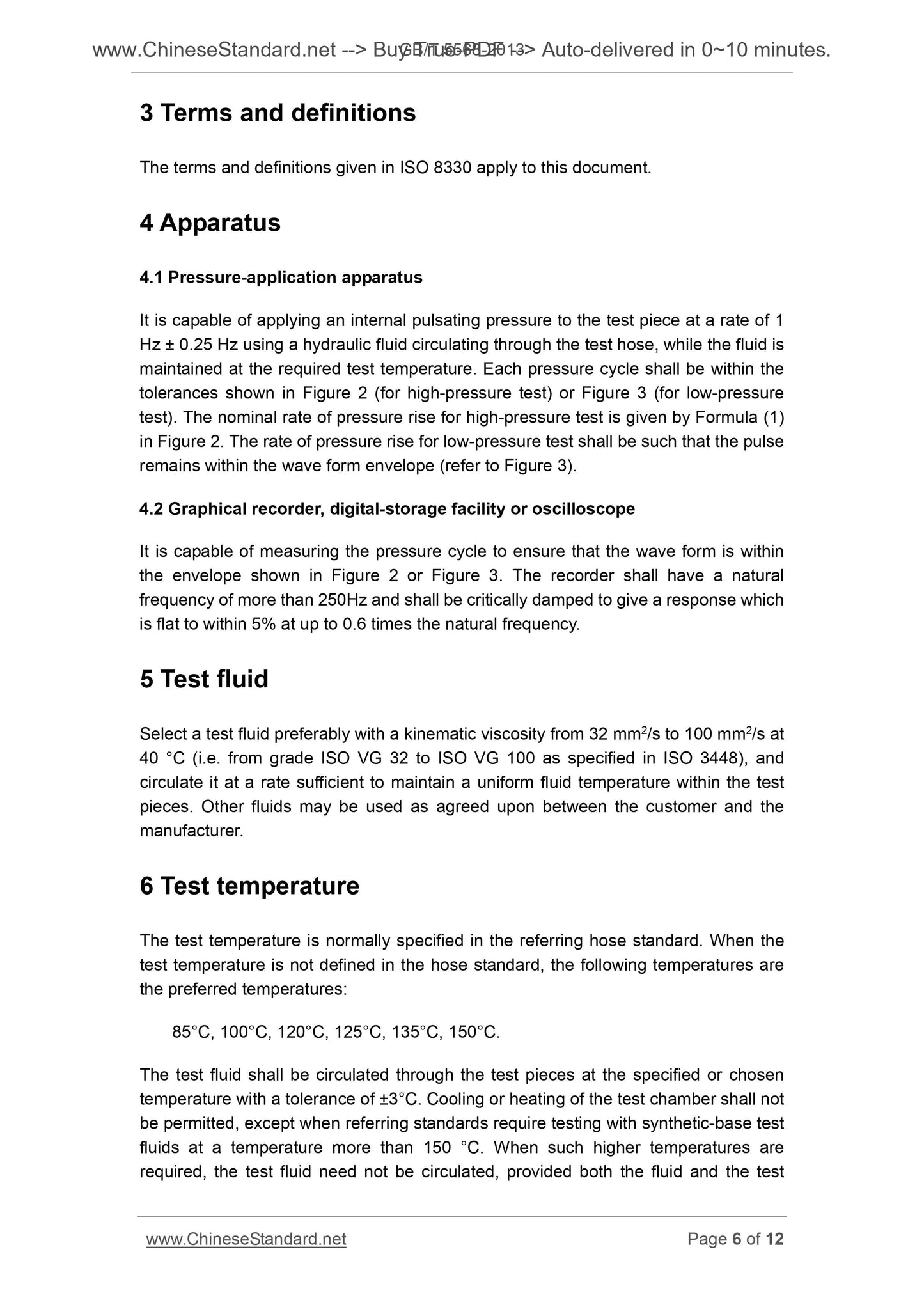1
/
of
6
www.ChineseStandard.us -- Field Test Asia Pte. Ltd.
GB/T 5568-2013 English PDF (GB/T5568-2013)
GB/T 5568-2013 English PDF (GB/T5568-2013)
Regular price
$130.00
Regular price
Sale price
$130.00
Unit price
/
per
Shipping calculated at checkout.
Couldn't load pickup availability
GB/T 5568-2013: Rubber or plastics hoses and hose assemblies -- Hydraulic-pressure impulse test without flexing
Delivery: 9 seconds. Download (and Email) true-PDF + Invoice.Get Quotation: Click GB/T 5568-2013 (Self-service in 1-minute)
Newer / historical versions: GB/T 5568-2013
Preview True-PDF
Scope
This Standard specifies hose impulse test, without flexing, of rubber or plasticshydraulic hose assemblies at both high and low impulse pressures. The high-pressure
testing is carried out at pressures more than 3MPa and the low-pressure test at
pressures from 1.5 MPa to 3 MPa.
The test procedure applies to hydraulic hose assemblies that are subject to pulsating
pressures in service which are included in the product requirements.
Note: Impulse test procedures with flexing can be found in ISO 6802, "Rubber and
plastics hoses and hose assemblies with wire reinforcements - Hydraulic impulse test
with flexing".
Basic Data
| Standard ID | GB/T 5568-2013 (GB/T5568-2013) |
| Description (Translated English) | Rubber or plastics hoses and hose assemblies -- Hydraulic-pressure impulse test without flexing |
| Sector / Industry | National Standard (Recommended) |
| Classification of Chinese Standard | G42 |
| Classification of International Standard | 23.040.70 |
| Word Count Estimation | 8,887 |
| Older Standard (superseded by this standard) | GB/T 5568-2006 |
| Quoted Standard | ISO 3448; ISO 8330; ISO/TR 11340 |
| Adopted Standard | ISO 6803-2008, IDT |
| Regulation (derived from) | National Standards Bulletin 2013 No. 27 |
| Issuing agency(ies) | General Administration of Quality Supervision, Inspection and Quarantine of the People's Republic of China, Standardization Administration of the People's Republic of China |
| Summary | This standard provides no song rubber or plastic hydraulic hose assemblies at high pressure and low pressure flexible hose impulse test conducted. High voltage test pressure greater than 3MPa, between the low-pressure test pressure 1. 5MPa and 3MPa. This |
Share
